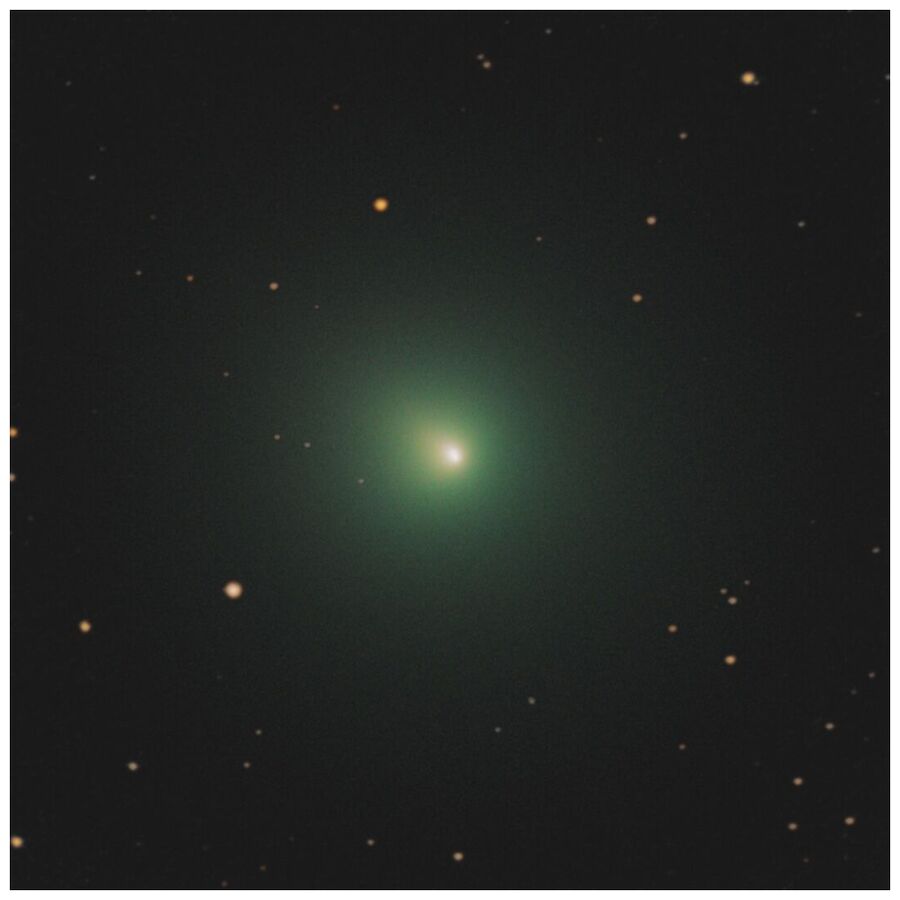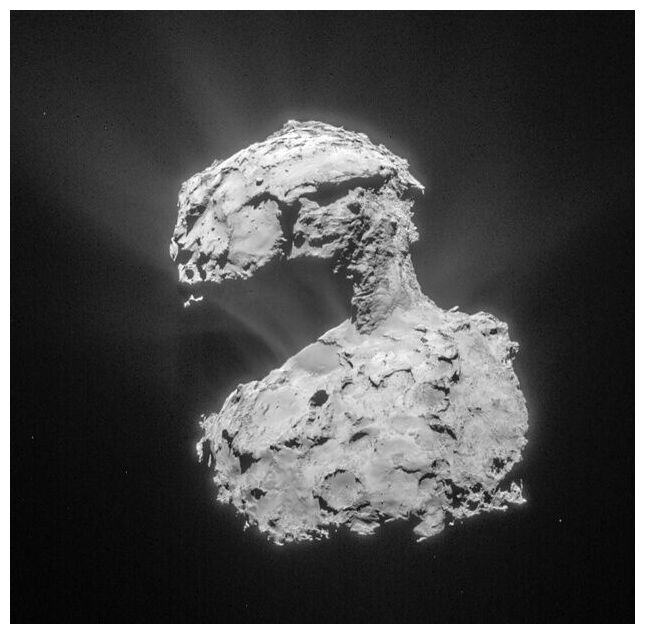
Comets (and some asteroids) leave a trail of debris behind them like a trail of celestial breadcrumbs. If the orbit of a comet crosses the orbit of the Earth then the particles from the debris (that are often no larger than grains of sand) collide with our atmosphere. At the immense speeds (of the order of 60 km per second, the particles falling through the atmosphere cause the gas to glow giving rise to the classic shooting star we see in the sky. Because the orbits of Earth and comets are relatively fixed, this process repeats itself every time we go through the same part of the orbit giving us the familiar annual meteor showers.
One such comet that it seems may become host to a new annual shower is Comet 46P/Wirtanen (46P). It nearly hit the headlines previously when it had been initially selected as the target for the Rosetta mission which, as you may recall, visited 67P/Churyumov-Gerasimenko instead. 46P is known as a short period comet taking 5.4 years to complete one orbit of the Sun. It is among the family of comets known as a Jupiter comet which has a most distant point from the Sun of between 5 and 6 astronomical units (1 AU is the average distance between the Sun and Earth). Observations have suggested it has a diameter of about 1.4km.
Due to the high levels of ice present in comets, it's not unusual for active areas on their surface to appear as the ices sublimate into gasses or pockets of gas escape. Observations using the TRAPPIST telescope (The Transiting Planets and Planetesimals Small Telescope) suggest 40% of the surface is active which is higher than the usual 5-10% for Jupiter family comets. A recent study found the presence of mm sized dust particles in the comet's coma which should be visible upon entering Earth's atmosphere.
The orbit of 46P has a very low minimum orbit intersection distance (MOID) to Earth of just 0.071AU. The MOID between two objects that orbit a common point is the distance between the closest points of their orbits. The low MOID and the mm sized particles mean there is a high liklihood it could be the source of a meteor shower. Previous observations however have revealed no positive confirmation of peaks in 2017 and 2019.
During the 2017 and 2019 predictions, it seems the low velocity of the particles coupled with the radiant (the point of apparent origin of the shower) below the horizon suggest that visibility may have been severely limited. The radiant of this predicted shower is in the constellation Sculptor and the shower has been dubbed the Lambda Sculptorids.
The prediction for the 2023 shower, which predicted an encounter from a stream of debris from an outburst in 1974, suggested an outburst of meteors on December 12 between 12:08 and 20:06. A further outburst was predicted between 17:05 and 06:26 on December 13. The team who presented their findings in Astronomy and Astrophysics reported meteor activity as predicted and detected 23 meteors from the new shower on the night of December 12 2023. The team are now looking at the models to see what we might expect to see this year and whether Lamba Sculptorids need to be added to our list of annual meteor showers.
Source : Observations of the new meteor shower from comet 46P/Wirtanen




⛄️